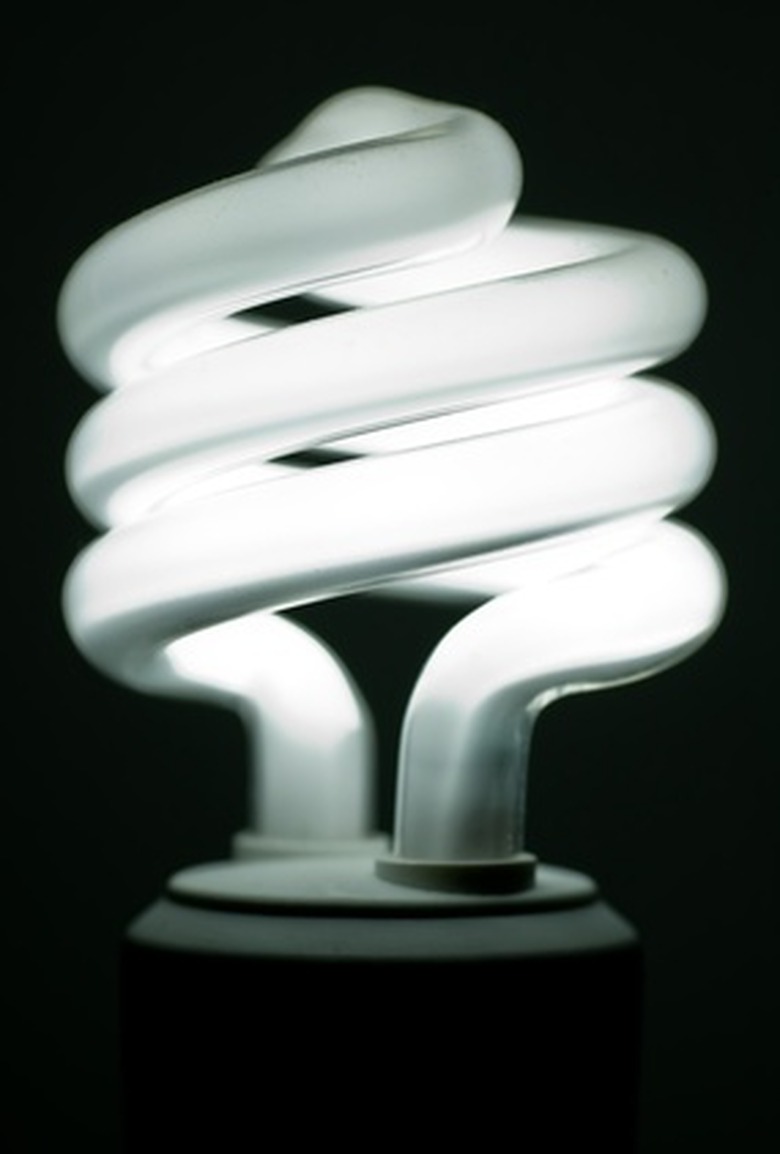What Is The Spectrum Of Fluorescent Light?
Compact fluorescent light bulbs (CFLs) have taken the place of incandescent bulbs in many homes and offices. Fluorescent lights last longer and use less energy, which saves money. They also produce power in a different manner than incandescents do, delivering a different spectrum of light wavelengths. Fluorescent lights generate more short-wavelength light than incandescent bulbs do.
TL;DR (Too Long; Didn't Read)
The spectrum of fluorescent lighting ranges from warm white to near daylight, depending on the lamp's phosphor coating.
Fluorescent Light: How it Works
Fluorescent Light: How it Works
Fluorescent light comes from two types of energy interactions. The first occurs when electricity courses through the gas in the bulb, causing it to emit ultraviolet light. The phosphor coating on the inside of the bulb absorbs the UV rays, in turn producing the second type of energy, visible light. The type of phosphor material used in the bulb affects the spectrum of light that fluorescent bulbs produce.
Spectrum Qualities of Fluorescent Lamps
Spectrum Qualities of Fluorescent Lamps
The fluorescent spectrum contains light wavelengths produced from the phosphor coating, that a device called a spectrometer measures and displays as a graph. Light in a typical fluorescent spectrum spikes strongly with blue, a little green and red wavelengths, with several variations based on the type of bulb.
Warm White
Warm White
Lighting experts refer to different hues of white light in terms of "color temperature," which refers to how the light from a white-hot object compares to other kinds of lighting: the sun, candles, incandescent bulbs and fluorescent lights. Different fluorescent bulbs produce light of different color temperatures. The "warmer" the bulb, the more reddish the light spectrum will be. In a paradox, the cooler temperatures produce what is called a "warm white" fluorescent color, which is similar to an incandescent light, but with more orange. Slightly higher color temperatures produce warm white colors with less red.
Cool White
Cool White
Cool white fluorescent bulbs have a medium to high color temperature, and produce light that is plain white or icy white in color. The highest color temperatures produce an even bluer light, which includes the reds and oranges from the previous temperatures but adds blue wavelengths that tint the overall spectrum.
Full Spectrum
Full Spectrum
Some types of fluorescent bulbs produce "full spectrum" light which mimics the spectrum and color temperature of real daylight. These bulbs can be useful for people sensitive to the colder colors of other fluorescent bulbs, but they are used most often as grow lights. Indoor plants respond well to the full spectrum of these special bulbs.
Cite This Article
MLA
Lacoma, Tyler. "What Is The Spectrum Of Fluorescent Light?" sciencing.com, https://www.sciencing.com/spectrum-fluorescent-light-6633180/. 30 April 2018.
APA
Lacoma, Tyler. (2018, April 30). What Is The Spectrum Of Fluorescent Light?. sciencing.com. Retrieved from https://www.sciencing.com/spectrum-fluorescent-light-6633180/
Chicago
Lacoma, Tyler. What Is The Spectrum Of Fluorescent Light? last modified March 24, 2022. https://www.sciencing.com/spectrum-fluorescent-light-6633180/
